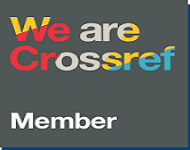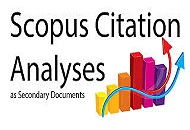Development of Teaching Materials for Popular Scientific Articles Using Contextual Approach for Grade VIII Students
DOI:
https://doi.org/10.33394/jp.v12i4.17376Keywords:
teaching materials, popular scientific articles, contextual approachAbstract
This study aims to develop a popular scientific article teaching book based on a contextual approach for eighth-grade students. The research method used is Research and Development (R&D) with the 4D model, limited to the development stage. The research subjects involve teachers and eighth-grade students from MTs Negeri 1 Kota Magelang, with feasibility assessments conducted by two subject matter experts and two media experts. Data analysis used quantitative descriptive techniques through the calculation of the average expert validation score, supported by qualitative analysis of improvement suggestions. The results show that the developed textbook received a 'highly suitable' category, with scores of 95.3% from subject matter experts and 96.6% from media experts, resulting in an overall average of 95.9%. Therefore, the textbook is deemed highly suitable for use as a learning support tool for popular scientific article texts in junior high schools/MTs.
References
Adisty, F. V. (2024). Pengembangan Lembar Kerja Peserta Didik Interaktif Berbasis liveworksheets pada Materi Artikel Ilmiah Populer Kelas VIII SMP Puspanegara Kabupaten Bogor (Skripsi, Universitas Pakuan). Universitas Pakuan Repository. https://eprints.unpak.ac.id/8572/1/SKRIPSI%20FAYZA%20VINCI%20ADIST Y_compressed.pdf
Astuti, R. B., Supeno, S., & Purwantiningsih, A. (2024). Validitas dan Kepraktisan Bahan Ajar IPAS Berbasis Multirepresentasi untuk Meningkatkan Keterampilan Kolaborasi Siswa Sekolah Dasar. Jurnal Pendidikan: Riset dan Konseptual, 8(4), 877-887. https://doi.org/10.28926/riset_konseptual.v8i4.1097
Gusfitri, M. L., & Delfia, E. (2021). Cerdas Cergas Berbahasa dan Bersastra Indonesia SMP/MTs Kelas VIII. Jakarta: Pusat Kurikulum dan Pembukuan, Kementerian Pendidikan, Kebudayaan, Riset, dan Teknologi Republik Indonesia.
Holis, K., & Silvia. (2024) Pengembangan Bahan Ajar PAI Berbasis Video untuk Meningkatkan Pemahaman Murid MI. PENDASI Jurnal Pendidikan Dasar Indonesia 8.1 (2024): 1-13. https://doi.org/10.23887/jurnal_pendas.v8i1.2732
Holtzblatt, K., & Beyer, H. (2016). Contextual design: Design for life. Morgan Kaufmann.
Irawan, A. G., Nyoman Padmadewi, N., & Artini, L. P. (2018). Instructional materials development through 4D model. In SHS Web of Conferences (Vol. 42, p. 00086). EDP Sciences. https://doi.org/10.1051/shsconf/20184200086
Karimah, N., & Azizah, A. (2025). Penerapan model kooperatif tipe Jigsaw dalam pembelajaran teks artikel ilmiah populer kelas VIII-C SMP IT Al-Fateeh Semarang. Deiktis: Jurnal Pendidikan Bahasa dan Sastra, 5(3), 1585-1593. https://doi.org/10.53769/deiktis.v5i3.1472
Khalimah, D. N., Egar, N., & Umaya, N. M. (2022). Pengembangan Bahan Ajar Menulis Teks Laporan Hasil Observasi dengan Pendekatan Kontekstual Berbasis Lingkungan pada Siswa Kelas VII di SMP Kabupaten Semarang. Jurnal Penelitian Bahasa, Sastra, dan Pengajarannya, 6(1). Universitas PGRI Semarang. https://doi.org/10.26877/teks.v6i1.8169
Kusmayati, N. B., & Parai, H. (2025). Development Of Biography Text Writing Teaching Materials Assisted By Weebly Media For Grade X Student. In International Seminar on Humanity, Education, and Language (pp. 937-947). https://doi.org/10.21009/ishel.v1i1.57462
Lahagu, Y. K., Ndruru, M., Harefa, N. A. J., & Waruwu, L. (2025). Pengembangan Bahan Ajar Berbasis Kearifan Lokal pada Teks Eksplanasi Melalui Flipbook Siswa Kelas VIII SMP Swasta Kristen Tomosa 1. Kata: Bahasa, Sastra, dan Pembelajarannya, 13(1), 283–291. http://dx.doi.org/10.23960/Kata283
Lumban Gaol, H. (2025). Pengaruh Model Pembelajaran Multiliterasi Terhadap Keterampilan Menulis Karya Ilmiah Siswa Kelas XI SMA Negeri 1 Baktiraja. https://repository.uhn.ac.id/handle/123456789/12260
Mahardika, A. A. A., & Silalahi, R. M. P. (2025). Incorporating Critical Literacy In Elt: Improving Indonesian Students’critical Thinking and Writing Engagement. Journal of English Language and Culture, 15(2). http://dx.doi.org/10.30813/jelc.v15i2.8300
Marshall, C. (2009). Reading and writing the electronic book. Morgan & Claypool Publishers.
Mukholifah, M., Tisngati, U., & Ardhyantama, V. (2020). Mengembangkan media pembelajaran wayang karakter pada pembelajaran tematik. Jurnal Inovasi Penelitian, 1(4), 673-682. https://doi.org/10.47492/jip.v1i4.152
Nasifa, T. H., & Insani, N. H. (2025). Ngapak E-Book Development: Text Material Description of Tourist Attractions for Grade VII of Junior High School. IDEAS: Journal on English Language Teaching and Learning, Linguistics and Literature, 13(1), 1330-1350. https://doi.org/10.24256/ideas.v13i1.6181
Nuranjeli, E. D., & Anwar, M. S. (2025). Analisis Kesalahan Penggunaan Ejaan dalam Artikel Ilmiah Populer pada Media Pop-Up Book Karya Siswa Kelas VIII SMP Giki 2 Surabaya. Jurnal Ilmiah Buana Bastra: Bahasa, Susastra, dan Pengajarannya, 12(1), 62-73. https://doi.org/10.36456/bastra.vol12.no1.a10215
Nurhasanah. (2022). Meningkatkan Hasil Belajar Peserta Didik tentang Mengidentifikasi Informasi Teks Eksposisi berupa Artikel Ilmiah Populer dari Koran/Majalah yang Didengar dan Dibaca Menggunakan Model Pembelajaran Kooperatif Tipe Make A Match. Jurnal Edukha, 3(1), 101–110. https://doi.org/10.32832/edukha.v3i1.7225
Nurjamilah, A. S., & Suharyan, I. (2023). Analisis Struktur dan Unsur Kebahasaan Artikel Ilmiah Populer dalam Rubrik Opini SINDONEWS Edisi Tahun 2021 sebagai Alternatif Bahan Ajar Artikel Ilmiah Populer di Kelas XII. PRIMER: Jurnal Ilmiah Multidisiplin, 1(2), 179–189. https://doi.org/10.55681/primer.v1i2.66
Octavia, A. A., & Tirtoni, F. (2024). Implementation of the Pancasila student profile in Pancasila education subjects to improve democratic character. Lectura: Jurnal Pendidikan, 15(1), 235-244. https://doi.org/10.31849/lectura.v15i1.18570
OECD. (2023). Indonesia country note: PISA 2022 results. OECD.
Prajabka, G. U., Andriani, Z. Z. D., & Fadly, A. M. H. (2025). Cultural Representation in English Textbook Produced By English Course in Pesantren. Journal of Innovation in Educational and Cultural Research, 6(4), 725-735. https://doi.org/10.46843/jiecr.v6i4.2418
Prastica, A. D., Suliantoro, T., & Irawati, S. (2025). Penerapan Pembelajaran Dilatasi dengan Pendekatan Kontekstual Berbasis Etnomatematika. Journal of Innovation and Teacher Professionalism, 3(2), 340-347. https://doi.org/10.17977/um084v3i22025p340-347
Rasita, N. (2021). Pengembangan bahan ajar teks prosedur berbasis kearifan lokal untuk siswa kelas VII SMP (Skripsi, Universitas Tidar). Repositori Universitas Tidar. https://repositori.untidar.ac.id/index.php?p=fstream-pdf&fid=20724&bid=10616
Rahmawati, Y., & Purwati, P. D. (2025). Developing Flipbooks Teaching Material Based on Local Wisdom in Improving Young Learners’ Writing Skills of Descriptive Texts. Journal of Languages and Language Teaching, 13(1), 342-353. https://doi.org/10.33394/jollt.v13i1.11780
Salsabila, Y., Hartanto, W., & Puguh, H. T. J. (2025). Implementasi metode resitasi terhadap keterampilan menulis teks artikel ilmiah populer siswa VIII MTs Darussalam Pasuruan. Prosiding Sentr atama: Seminar Transformasi dan Teknologi Pendidikan Al Hikmah, 1, 594-604.
Saputri, D., Mellisa, M., Hidayati, N., & Fauziah, N. (2023). Lembar Validasi: Instrumen yang Digunakan Untuk Menilai Produk yang Dikembangkan Pada Penelitian Pengembangan Bidang Pendidikan. Biology and Education Journal, 3(2), 133-151.
Simon, U. K., Steindl, H., Larcher, N., Kulac, H., & Hotter, A. (2016). Young science journalism: Writing popular scientific articles may contribute to an increase of high-school students’ interest in the natural sciences. International Journal of Science Education, 38(5), 814-841. https://doi.org/10.1080/09500693.2016.1173260
Sitompul, F., Hasratuddin, & Ardiasih, L. S. (2024). Pengembangan Bahan Ajar ELearning Berbasis Model Kontekstual untuk Meningkatkan Keterampilan Menulis Deskripsi Siswa Kelas VII SMP Negeri 3 Tarutung. Jurnal Pendidikan, 9(2), 123–135. https://doi.org/10.23969/jp.v9i2.13711
Sugiyono. (2017). Metode Penelitian Kuantitatif, Kualitatif, dan R&D. Bandung: Alfabeta.
Sukmawati, D., & Utami, R. R. (2025). Kelayakan Bahasa Buku Teks Mahir Berbahasa Indonesia Kelas VIII Kurikulum Merdeka Terbitan Erlangga. LEKSIS: Jurnal Pendidikan Bahasa dan Sastra Indonesia, 5(1). https://doi.org/10.60155/leksis.v5i1.420
Susanti, I. T., Maulita, N. B. D., & Anindya, S. A. (2025). Metode Tematik dalam Pembelajaran Bahasa Perspektif Siswa dan Guru. Morfologi: Jurnal Ilmu Pendidikan, Bahasa, Sastra dan Budaya, 3(2), 01-12. https://doi.org/10.61132/morfologi.v3i2.1420
Sutikno, S. S. P. (2024). Analisis Kesalahan Berbahasa Pada Teks Artikel Ilmiah Populer Siswa Kelas VIII SMP Negeri 1 Kebakkramat. Universitas Sebelas Maret.
Thiagarajan, S., Semmel, D. S., & Semmel, M. I. (1974). Instructional development for training teachers of exceptional children: A sourcebook. Minneapolis, MN: University of Minnesota.
Waruwu, M. (2024). Metode penelitian dan pengembangan (R&D): konsep, jenis, tahapan dan kelebihan. Jurnal Ilmiah Profesi Pendidikan, 9(2), 1220-1230. DOI: 10.29303/jipp.v9i2.2141
Widari, N. A., & Permatasari, S. (2025). Validity Of The Development Of Truth Or Dare Card Media For Teaching Negotiation Text Material In High School. Indonesian Journal of Educational Science (IJES), 7(2), 239-252. https://doi.org/10.31605/ijes.v7i2.4892
Wulan, N., Kusumawardani, A. R., & Khusna, N. (2024). Asesmen Diagnostik dalam Penentuan Strategi Pembelajaran Keterampilan Menulis Artikel Ilmiah Populer. Jurnal Onoma: Pendidikan, Bahasa, dan Sastra, 10(4), 3948–3954. https://doi.org/10.30605/onoma.v10i4.4528
Yani, R., & Zuve, F. (2024). Pengaruh Penggunaan Model Project Based Learning (PjBL) terhadap Keterampilan Menulis Artikel Ilmiah Populer Siswa Kelas VIII SMP Negeri 1 Banuhampu. Journal of Education Language and Innovation, 2(1), 1–10. https://doi.org/10.24036/jeli.v2i1.40
Yumarni, A., Isnaini, R., Sari, A. P., Junita, S., & Nurfadilah, B. (2025). Penerapan Pembelajaran Kontekstual Untuk Mengembangkan Kemampuan Siswa SMP Negeri 18 Kota Bengkulu. Jurnal Kajian Ilmu Pendidikan (JKIP), 5(4), 1015-1021. https://doi.org/10.55583/jkip.v5i4.1193
Published
How to Cite
Issue
Section
Citation Check
License
Copyright (c) 2025 The Author(s)

This work is licensed under a Creative Commons Attribution-ShareAlike 4.0 International License.
License and Publishing Agreement
In submitting the manuscript to the journal, the authors certify that:
- They are authorized by their co-authors to enter into these arrangements.
- The work described has not been formally published before, except in the form of an abstract or as part of a published lecture, review, thesis, or overlay journal.
- That it is not under consideration for publication elsewhere,
- That its publication has been approved by all the author(s) and by the responsible authorities tacitly or explicitly of the institutes where the work has been carried out.
- They secure the right to reproduce any material that has already been published or copyrighted elsewhere.
- They agree to the following license and publishing agreement.
Copyright
Authors who publish with Jurnal Paedagogy agree to the following terms:
- Authors retain copyright and grant the journal right of first publication with the work simultaneously licensed under a Creative Commons Attribution License (CC BY-SA 4.0) that allows others to share the work with an acknowledgment of the work's authorship and initial publication in this journal.
- Authors are able to enter into separate, additional contractual arrangements for the non-exclusive distribution of the journal's published version of the work (e.g., post it to an institutional repository or publish it in a book), with an acknowledgment of its initial publication in this journal.
- Authors are permitted and encouraged to post their work online (e.g., in institutional repositories or on their website) prior to and during the submission process, as it can lead to productive exchanges, as well as earlier and greater citation of published work.
Licensing for Data Publication
-
Open Data Commons Attribution License, http://www.opendatacommons.org/licenses/by/1.0/ (default)






